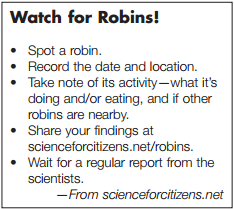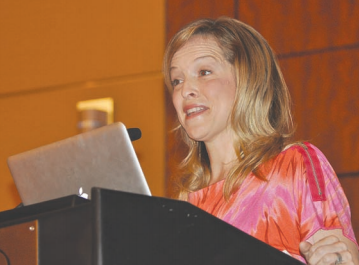 Cheerleading and science aren’t often mentioned in the same breath.
Cheerleading and science aren’t often mentioned in the same breath.
But they should be, said Darlene Cavalier, who markets herself as the Science Cheerleader. She was Monday’s plenary speaker at CSE’s annual meeting, held 1–3 May in Baltimore, MD.
Cavalier cheered professionally for the Philadelphia 76ers while in college and later became an advocate for citizen-scientists. Based on those interests, she has gone on to launch two Web sites, scienceforcitizens. net and sciencecheerleader.com. The latter often pairs with National Football League (NFL) cheerleaders.
“I found professional cheerleaders who were pursuing science careers,” she said, adding that she has found more than 50 cheerleaders so far. “It resonates with millions of little cheerleaders.”
In her first experiment with using cheerleaders to deliver science messages, at an NFL game between the Philadelphia Eagles and the Washington Redskins, the science cheerleaders explained the meaning of a vector. When watching the prerecorded presentation at a local tavern, Cavalier said she was pleased to see the patrons understood and identified a vector later in the game.
Cavalier wasn’t surprised football fans were interested in science. After all, she said, science centers record 270 million visits a year in the United States.

The format for the scienceforcitizens.net Web site emphasizes participation, Cavalier said, adding it features more than 400 projects. They include an “ebird” effort, which has generated 1.5 million reports; work to search space for extraterrestrials; and a project titled “Evolution MegaLab,” surveying snail populations in Europe.
Many of the projects are simple. Researchers “use citizen-scientists as our first line of defense,” she said, calling the citizen-scientists “one of the nation’s greatest resources.”
“We’re one of the only nations that require students to take two science courses at the nation’s colleges and universities,” Cavalier continued.
In the future, she wants to make the scienceforcitizens.net Web site a “sustainable business,” she said.
“We can recruit volunteers for your project,” she told those attending the session. “We can create a tool that allows people to do a project on our site and exports the data to you.”
The most popular projects? Those involving birds, followed by a growing interest in monitoring water quality.
TERESA M MELCHER is editor of CSE’s Science Editor.
